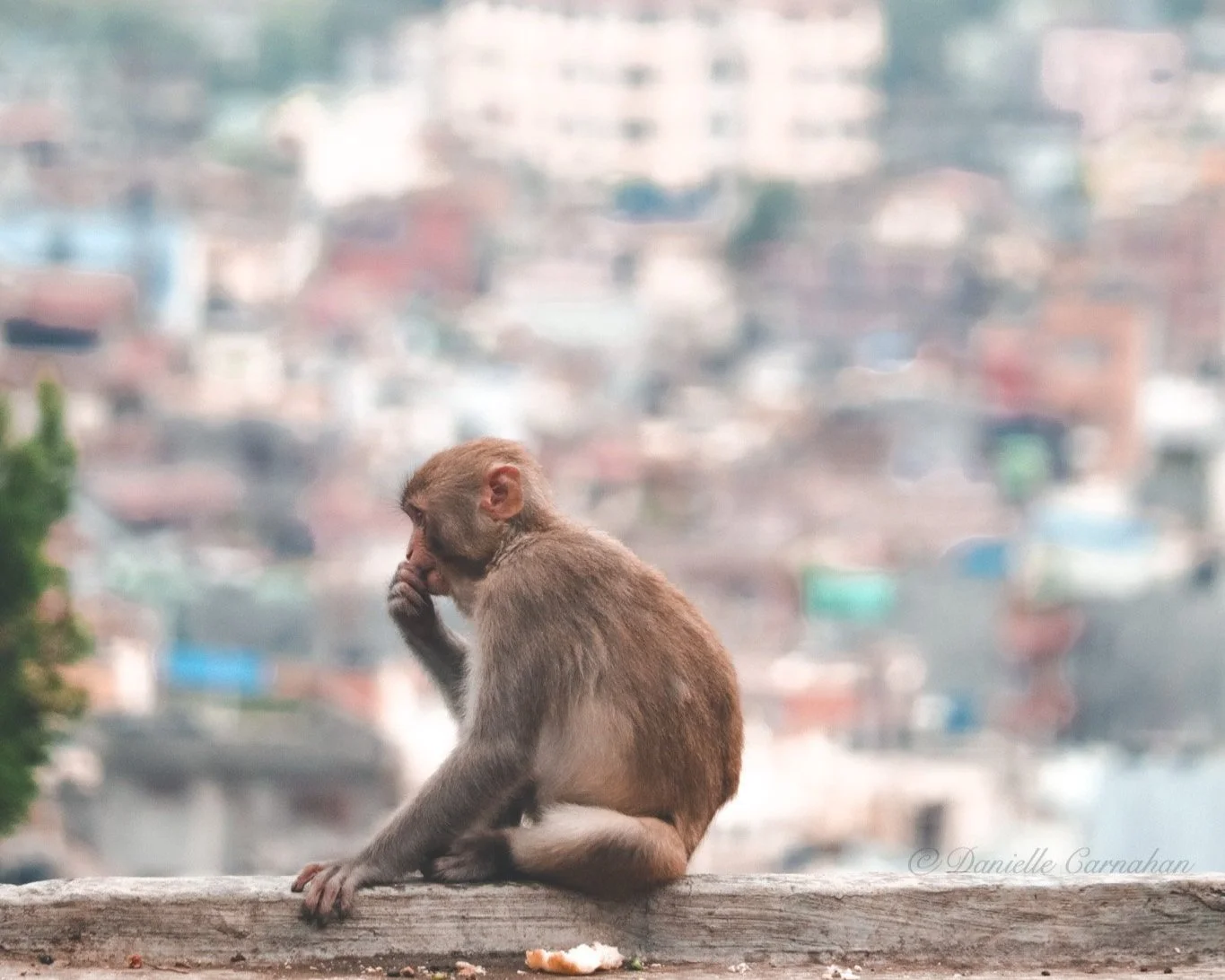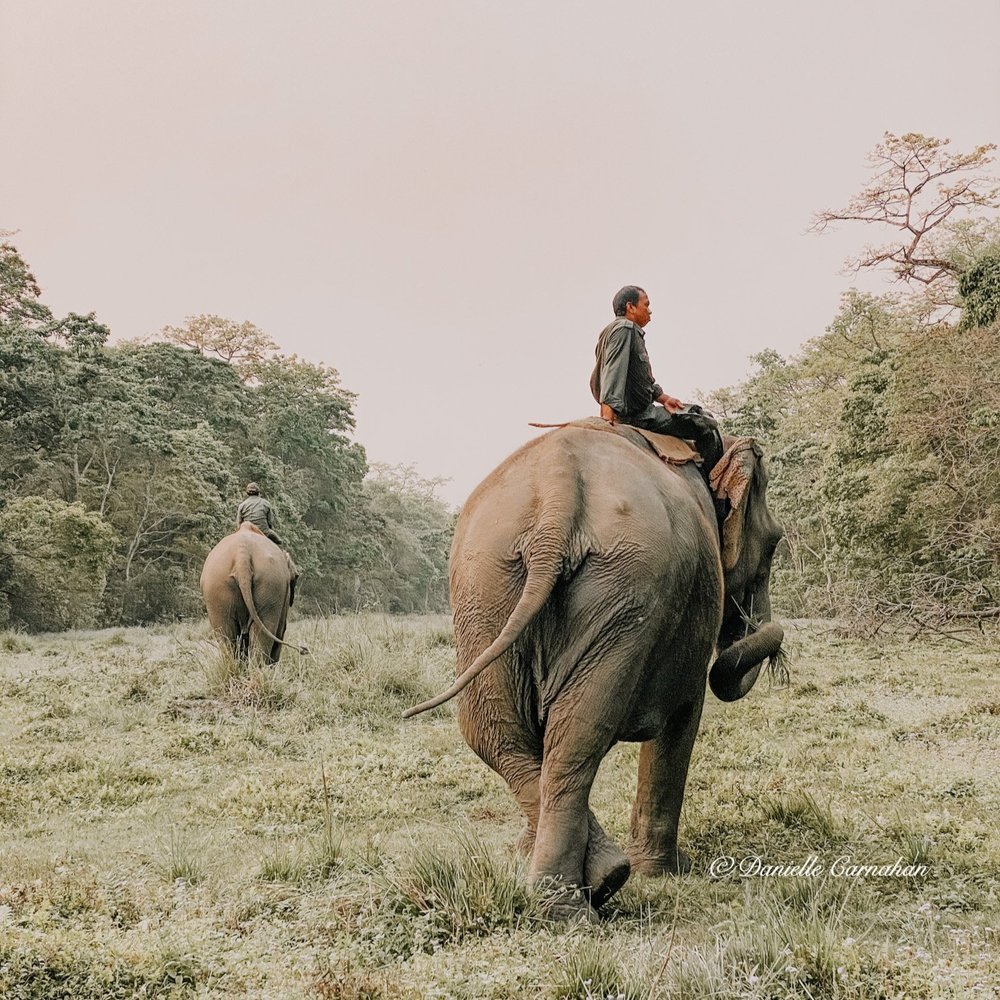Your ethical travel itinerary to nepal
Do you want to leave each country you travel to knowing you were a responsible tourist? This ethical guide to traveling in Nepal will walk you through exactly how to prioritize ethical wildlife treatment while seeing some of the incredible species that call Nepal home.
It’s no secret that Nepal is one of the most naturally beautiful countries in the world. The diversity of activities available is like no other country, from trekking in the tallest mountains in the world to taking a safari to see some of the most endangered wildlife in the world. Unfortunately, with so many options also comes unethical choices that are harmful to the wildlife in the country.
This travel guide is for those looking to support the local communities, nurture the environment, and cast your silent vote for the ethical treatment of the animals that call Nepal home.
Jeep Safari In Chitwan National Park
Jeep safaris are a great way to see wild animals in a safe and only mildly disruptive way. These kinds of trips into the national park support the communities that border the park and provide many jobs to locals. Each local that works as a guide is trained to identify wildlife and be the least disturbing while spotting wild animals.
This is the best way to visit the beautiful wildlife around Nepal because you can be sure that none of the animals are struggling with cruel treatment from humans. Most of the jeep safari tours are relatively streamlined, so you won’t need to investigate different tour companies extensively. If you’re able to, I’d recommend booking out an entire tour for your party, which ensures your group is the only people on the jeep. This can be beneficial for those serious about spotting wildlife and want everyone to be quiet and well-behaved while in the park.
When booking, make sure the company you’re using doesn’t take you to a hotel or privately owned elephant venue afterward for an elephant ride. Elephant rides are incredibly common in Nepal, which is a significant source of unfair treatment of captive elephants. Therefore, double-check that your package is only a trip into the national park.
Visiting Elephants Ethically In Nepal
As previously mentioned, elephant welfare is a huge issue in Nepal. If you want to see ethically managed elephants, there are only two facilities I can recommend:
Tiger Tops
Stand Up 4 Elephants
Tiger Tops
This lodge is a luxury venue that owns elephants and manages them ethically. You can stay at one of the Tiger Tops lodges in either Chitwan National Park or Bardia National Park; however, if you want to see their herd of elephants, you’ll need to head to their Chitwan lodge! Here you can go into the jungle and walk alongside the elephants in hopes of spotting rhinos, leopards, tigers, and more.
This is a more inclusive experience for those looking to stay in a top-of-the-line lodge with a pool, incredible meals, and beautiful jungle experiences. If you have at least two days to fill, I highly recommend booking yourself into Tiger Tops. A stay at one of their locations will go down as one of the most memorable ethical experiences during your time in Nepal. Read more about my trip to Tiger Tops here!
Stand Up 4 Elephants
If you’re looking to learn more about elephants and see some rescued elephants in a sanctuary, schedule an excursion to Stand Up 4 Elephants. This is a sanctuary near Sauraha, on the border of Chitwan National Park. You can stop by to see their two rescued elephants and learn about what’s going on with elephants around the country.
This is a much smaller time commitment than visiting Tiger Tops, making it ideal for travelers on a budget or lacking time to stay in a resort setting. Read more about the sanctuary here!
Between these two options, you won’t miss out on seeing elephants ethically while traveling through Nepal!
Unethical Animal Encounters To Avoid In Nepal
It can be incredibly tempting to leave ethics at home when traveling to a new and exciting country. You may even be swayed by people you deem as knowing more about the area telling you that something is ok to do. Keep in mind that the people in Nepal are incredibly hospitable and friendly. As a guest in the country, they want you to have a fantastic time, and part of that is letting you do the things you want.
If you get into a situation like this, refer back to your ethical code and reflect on if this activity is something you should be doing! For example, it’s not uncommon to see wildlife walking through the streets in many smaller towns near the national parks. If you spot something like a rhino, keep a safe distance and don’t disturb it by driving close to it or trying to get a photo near it.
Keep an eye out for other potentially harmful activities like horse carriage rides which use small over-worked horses. These activities can seem harmless as a tourist but contribute to exploitation and poor living conditions for the animals.
The less often tourists engage in these activities, the less common they’ll become. These animals will stop being used for tourism if tourists begin making more informed decisions. You can help encourage ethical animal treatment simply by choosing not to participate in these kinds of activities!
An Ethical Guide To Trekking In Nepal
Over the past few years, the Himalayas have seen increased traffic, increasing trash, human waste, and habitat destruction. We all think… “I don’t want to be that person while trekking,” but at the same time, it can be hard to avoid! Here are a few tips to keep in mind while preparing and starting your journey into the Himalayas:
Keep a safe distance from all wildlife. Don’t feed, touch, or try to get close for photos. The mountains are their home, and as trekkers, it’s our responsibility to keep them safe and stress-free. Our presence should be as minimally invasive as possible.
Pack out whatever you pack in. Don’t just throw your trash on the ground, don’t leave your human waste just anywhere. The plastic disposed of up there will stay in the environment for hundreds and thousands of years. If we want to keep the mountain ecosystem thriving, we have to leave it even more pristine than how we found it.
Stay on course as much as possible. The less we spread out and explore off-trail, the less disturbed the area will be. This benefits the wildlife and ecosystem as a whole.
Remember that all of the waste that’s left on the mountains impacts the local wildlife and environment. This is slowly killing life in the Himalayas. Trek ethically, and be sure to speak up if there are groups around you disrespecting the land, animals, or people who call Nepal’s mountains home.
Want to take a deeper dive into wildlife conservation? Join The Call to Conserve membership to access exclusive video updates, blog posts, and more!
🐘 We're proud to partner with SafetyWing to provide travel insurance for ethical travelers.
When you use our affiliate link, you’re directly supporting our nonprofit’s work in wildlife welfare and ethical tourism.
Learn More & Get Covered






